Introduction
Agriculture has undergone a remarkable transformation over the years, evolving from traditional methods to high-tech solutions. In the past, farmers relied on manual labor, basic tools, and natural resources to grow crops and raise livestock. However, the advent of technology has significantly changed the landscape of agriculture, making farming more efficient, sustainable, and productive.
Today, technology plays a vital role in modern farming. With the help of innovative tools and techniques, farmers can optimize crop production, minimize waste, and address challenges such as climate change, pests, and resource scarcity. From precision farming to automation, technology empowers farmers to make data-driven decisions that improve both the quality and quantity of their harvests.
This article will explore 10 powerful ways technology is revolutionizing agriculture, driving positive change for a better future. By integrating cutting-edge solutions, the agricultural sector can increase food production while ensuring sustainability for generations to come.
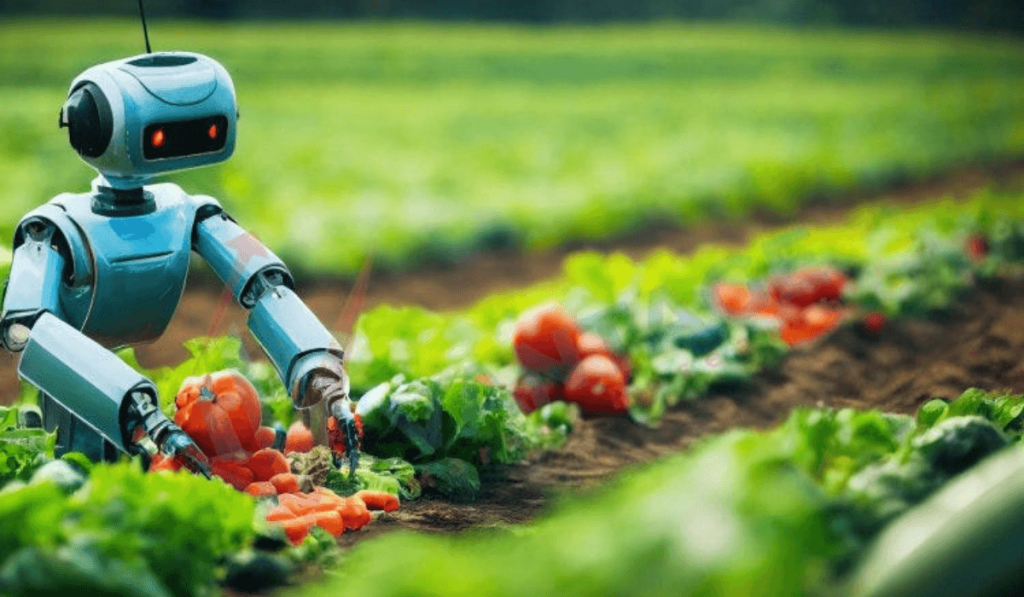
1.Precision Farming: Optimizing Crop Yields
Agriculture has seen significant advancements with precision farming, a method that uses technology to monitor and manage field variability. This technique utilizes tools such as GPS, drones, and sensors to collect real-time data on crop conditions, soil health, and environmental factors. By integrating these technologies, farmers can make more accurate decisions regarding planting, irrigation, fertilization, and pest control.
The benefits of precision farming are clear. It helps increase crop yields by ensuring that crops receive the right amount of water, nutrients, and care at the right time. It also reduces waste by optimizing the use of resources like water and fertilizers, minimizing excess usage. This efficiency leads to better crop health and higher productivity, ultimately making farming more sustainable and cost-effective.
Through precision farming, agriculture can reach its full potential, improving food security and reducing environmental impacts. With the right technology, farmers can optimize their operations and ensure a more prosperous future for agriculture.
2.Artificial Intelligence in Agriculture
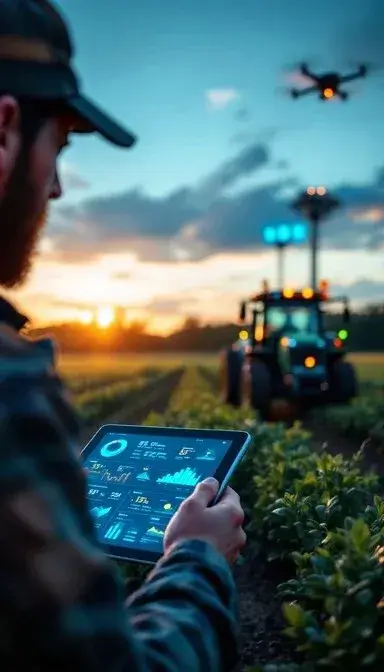
Agriculture is increasingly benefiting from the integration of artificial intelligence (AI), which helps farmers make smarter, data-driven decisions. AI plays a crucial role in predicting crop patterns, managing farms, and improving overall efficiency. By analyzing vast amounts of data, AI can identify trends and provide insights that would be impossible for humans to detect alone.
One major application of AI in agriculture is AI-powered weather forecasting. Accurate weather predictions help farmers plan planting, irrigation, and harvesting, ensuring they take advantage of ideal conditions. Additionally, AI-driven pest detection systems can monitor crops in real time, identifying early signs of pest infestations and recommending targeted treatments.
Farm management software powered by AI is another game-changer. These platforms use machine learning to analyze data from sensors, drones, and satellites to optimize resource allocation and streamline farm operations. With AI, agriculture becomes more efficient, reducing waste and increasing profitability while also promoting sustainability.
3. Drones for Monitoring and Spraying
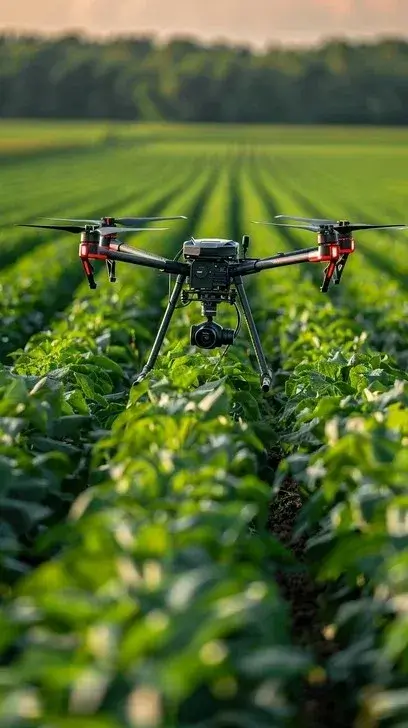
In agriculture, drones are becoming invaluable tools for monitoring large farmlands from the air. These unmanned aerial vehicles (UAVs) are equipped with high-resolution cameras and sensors that allow farmers to gather detailed data on crop health, soil conditions, and irrigation levels. Drones can cover vast areas in a short amount of time, providing real-time insights that help farmers make informed decisions.
Drones also play a crucial role in spraying fertilizers and pesticides. By using drones for precise application, farmers can ensure that fertilizers and pesticides are distributed evenly and accurately, minimizing waste and reducing the environmental impact. This targeted spraying method not only saves time and resources but also reduces the risk of over-application, which can harm crops and pollute the surrounding ecosystem.
With drones, agriculture becomes more efficient, cost-effective, and sustainable, making them a powerful tool for the modern farmer.
4. Automated Tractors and Harvesters
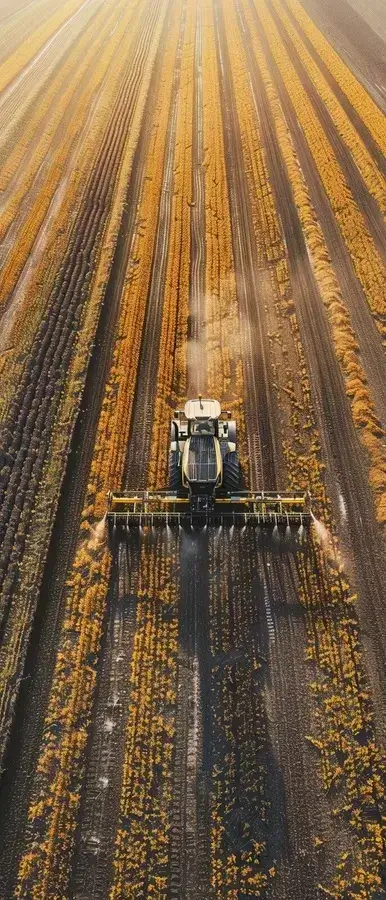
Agriculture is benefiting from the rise of automated tractors and harvesters. These autonomous machines are designed to assist with key tasks such as planting, tilling, and harvesting crops. With advanced sensors and GPS technology, these machines can operate without human intervention, making farming more efficient.
The use of automation in agriculture helps reduce labor costs, as fewer workers are needed for repetitive tasks. It also increases productivity by allowing machines to work longer hours without fatigue, leading to faster and more consistent results. For example, automated harvesters can quickly and accurately pick crops, reducing the time it takes to gather the harvest.
By incorporating automated tractors and harvesters, agriculture becomes more cost-effective and scalable, allowing farmers to produce more with less effort. These innovations are transforming the farming industry, making it more efficient and sustainable.
5. Vertical Farming: Growing in Urban Spaces
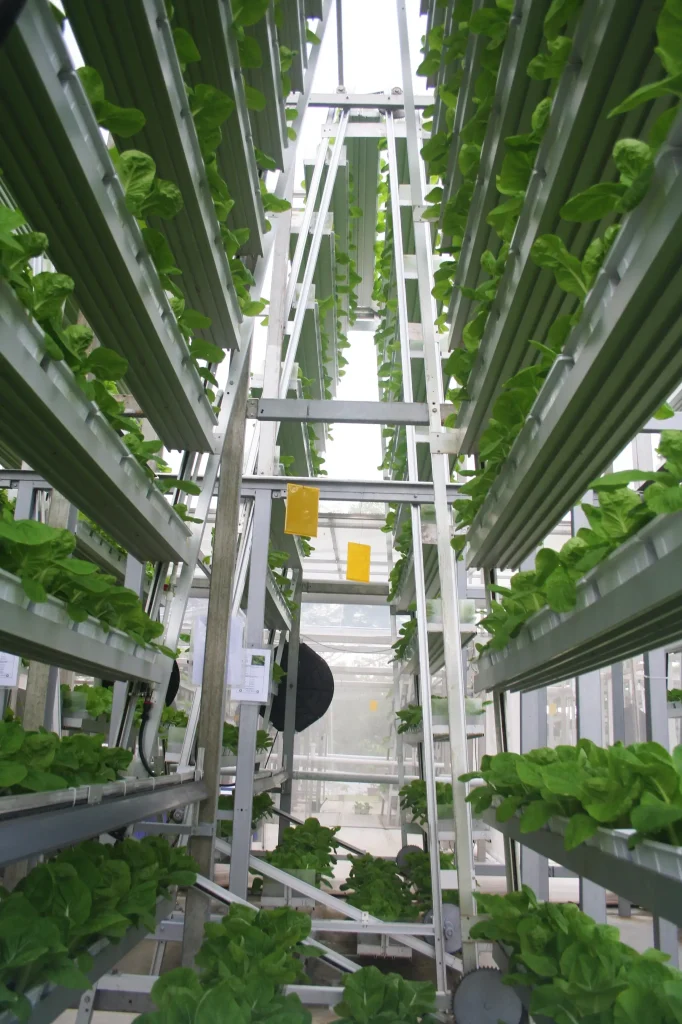
Agriculture is evolving with the introduction of vertical farming, a method that allows crops to be grown in stacked layers, typically in urban areas. This innovative approach makes use of limited space by growing plants upwards rather than outwards, making it ideal for cities with limited land for traditional farming.
Vertical farming maximizes space by using multi-story structures or vertical stacks, enabling farmers to grow more crops in smaller areas. This method is particularly useful in urban environments where land is expensive and scarce. It also reduces the need for long-distance transportation, as food can be grown and consumed locally, lowering carbon emissions.
In addition to space efficiency, vertical farming has a smaller environmental footprint. It requires less water and fewer pesticides compared to traditional farming, making it a more sustainable option. By bringing agriculture into urban spaces, vertical farming offers a solution for feeding growing city populations while minimizing environmental impact.
6.Internet of Things (IoT) in Agriculture
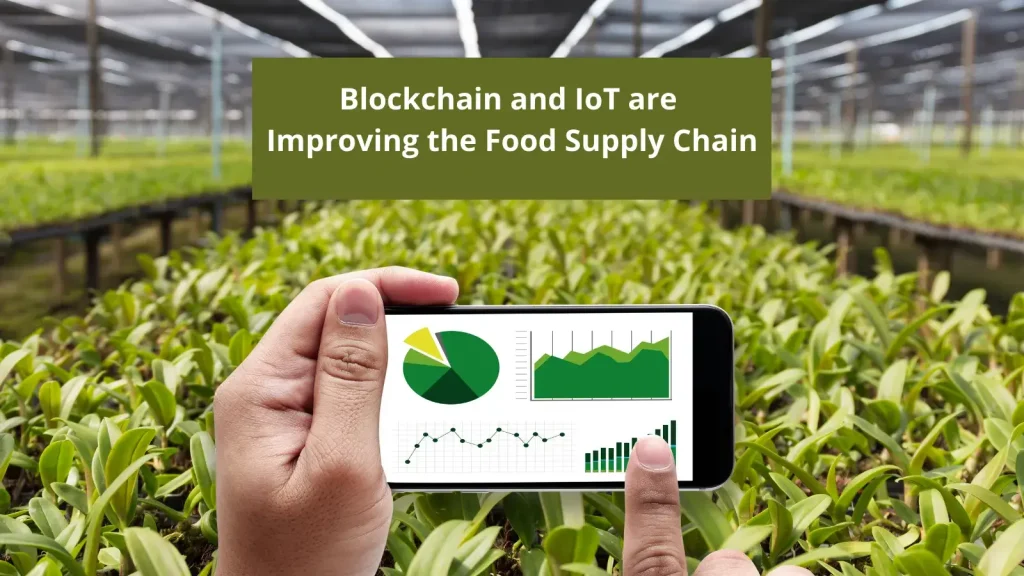
Agriculture is being transformed by the Internet of Things (IoT), where smart devices are used to collect data from the field. These IoT devices, such as soil moisture sensors, temperature monitors, and weather stations, provide farmers with real-time information about crop conditions. By gathering data on soil moisture, temperature, and other environmental factors, farmers can better understand the needs of their crops.
The benefit of IoT in agriculture is the ability to make informed decisions based on real-time data. For example, if soil moisture levels are too low, farmers can activate irrigation systems automatically, saving water and ensuring crops receive the right amount of hydration. This technology helps improve resource management, reduce waste, and increase crop yields, making farming more efficient and sustainable.
With IoT devices, agriculture becomes smarter, enabling farmers to monitor and respond to changing conditions quickly and effectively.
7. Genetically Modified Crops: Enhancing Resistance and Yield
Agriculture has greatly benefited from the development of genetically modified (GM) crops. These crops are engineered to improve disease resistance, increase yield, and enhance nutritional content. By introducing specific traits into plants, GM crops can withstand pests, diseases, and environmental stresses, allowing farmers to grow more with fewer resources.
One of the primary advantages of GM crops is their ability to produce higher yields. This is especially important as the global demand for food grows. GM crops can also be designed to tolerate harsh conditions, such as drought or poor soil, making them more resilient and reliable.
Despite the many benefits, there are concerns about the safety and long-term effects of GM crops. Critics worry about potential health risks and environmental impacts. However, extensive research and regulation ensure that GM crops are safe for human consumption and do not harm the environment. The ongoing debate highlights the need for continued studies to fully understand the implications of GM technology in agriculture.
Genetically modified crops play a crucial role in addressing the challenges of modern agriculture, helping to ensure food security and sustainability.
8. Blockchain for Transparency in the Food Supply Chain
Agriculture is benefiting from the use of blockchain technology, which provides greater transparency and traceability throughout the food supply chain. By using blockchain, every step of the journey from farm to table is securely recorded, making it easier to track the origin of products and their movement through the supply chain.
The key advantage of blockchain in agriculture is its ability to reduce fraud. With each transaction recorded on a secure, immutable ledger, it becomes much harder to falsify information about the source or quality of food products. Blockchain also enhances food safety by ensuring that all relevant data, such as harvesting conditions, transportation, and storage, is available for verification.
In addition, blockchain promotes ethical practices by allowing consumers to verify the sustainability and fair practices of farmers and suppliers. This transparency helps build trust between producers and consumers, ensuring that products meet quality standards and are produced responsibly.
By improving traceability, reducing fraud, and ensuring food safety, blockchain is making agriculture more reliable and trustworthy.
9.Sustainable Farming Technologies
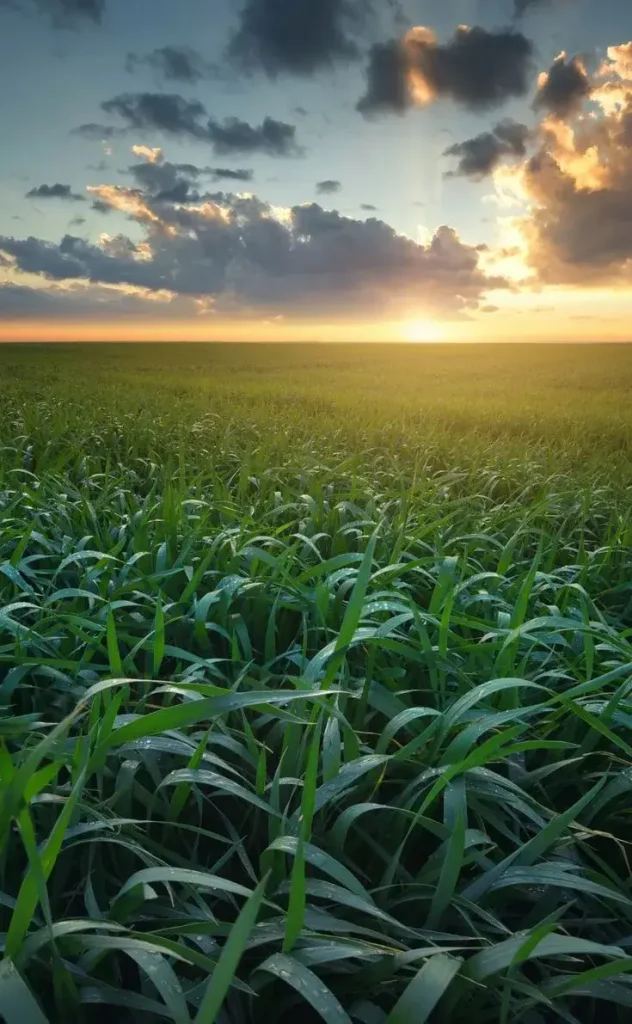
Agriculture is shifting towards more sustainable practices, with technology playing a key role in reducing environmental impact. One such advancement is the use of solar-powered irrigation systems. These systems rely on renewable energy to power irrigation pumps, reducing dependence on fossil fuels and ensuring that water is used more efficiently.
The benefits of sustainable farming technologies are clear. By using less water and energy, these technologies help conserve natural resources. For example, solar-powered systems minimize water waste by delivering the right amount of irrigation needed at the right time, based on real-time data.
Sustainable farming technologies also lower carbon emissions, contributing to a cleaner environment. By reducing energy use and utilizing renewable resources, these practices help farmers reduce their carbon footprint and promote environmental sustainability.
As agriculture moves toward sustainability, these technologies provide solutions that benefit both farmers and the planet, ensuring long-term success and reducing the negative impact of farming on the environment.
10. The Future of Biotechnology in Agriculture
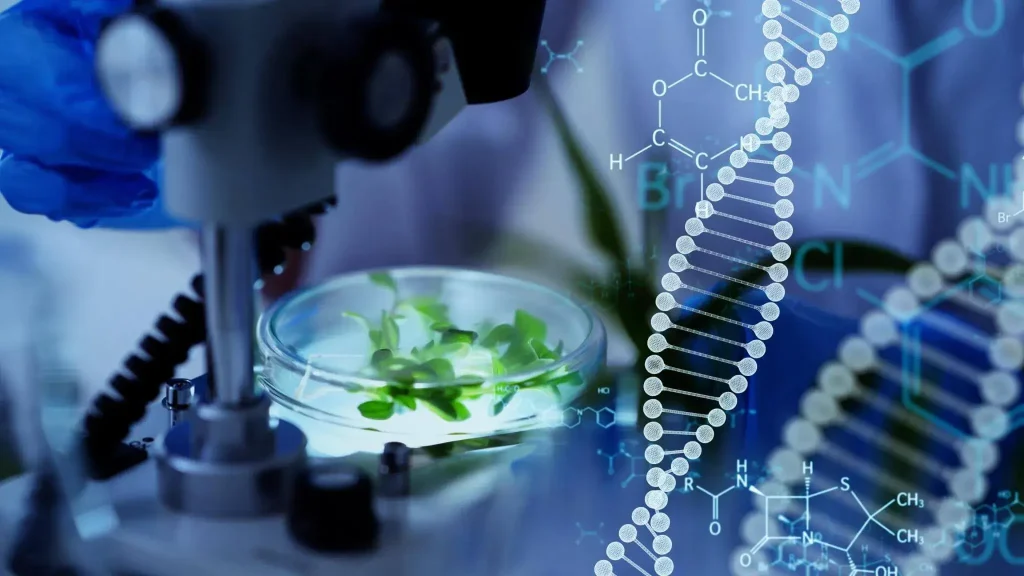
Agriculture is being revolutionized by the advancements in biotechnology, particularly with technologies like CRISPR. This gene-editing technology allows scientists to modify the DNA of plants, enabling the creation of crops with specific traits that improve their resilience, yield, and nutritional value.
One of the most promising applications of biotechnology in agriculture is the ability to design crops that can withstand the challenges of climate change. CRISPR and other biotechnologies can help create crops that are more resistant to drought, pests, and extreme weather conditions, ensuring a stable food supply even in difficult environmental conditions.
The potential of biotechnology to produce more food with fewer resources is also significant. By enhancing crop yields and reducing the need for harmful chemicals, biotechnology can help feed the growing global population sustainably. As these technologies continue to evolve, they hold the key to addressing many of the challenges facing modern agriculture, ensuring food security for the future.
Conclusion
Agriculture is undergoing a transformation thanks to technological innovations that are improving productivity and sustainability. From precision farming and AI to drones and biotechnology, these advancements are helping farmers increase yields, reduce waste, and make smarter decisions. Technologies like blockchain and sustainable farming practices are also ensuring a more transparent and environmentally-friendly agricultural sector.
It is crucial that we continue to embrace these technologies to build a better and more sustainable agricultural future. As challenges such as climate change and a growing population increase, technology will play a key role in ensuring food security and sustainability.
Farmers, investors, and policymakers must work together to support and invest in agricultural technology. By doing so, they can help drive innovation, improve farming practices, and ensure that agriculture remains resilient and productive for generations to come.
